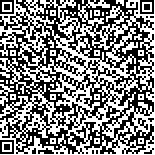|
| 引用本文: | 代鲁平,李超伦,王世伟,王延清,张芳.基于ZooScan图像技术的南黄海夏季浮游动物群落结构分析.海洋与湖沼,2016,47(4):764-773. |
| |
|
| |
|
|
| 本文已被:浏览 2316次 下载 2536次 |

码上扫一扫! |
|
|
| 基于ZooScan图像技术的南黄海夏季浮游动物群落结构分析 |
|
代鲁平1,2,3, 李超伦1,3, 王世伟4,3, 王延清1,3, 张芳1,3
|
|
1.中国科学院海洋研究所 海洋生态与环境科学重点实验室 青岛 266071;2.中国科学院大学 北京 100049;3.青岛海洋科学与技术国家实验室 海洋生态与环境科学功能实验室 青岛 266071;4.中国科学院海洋研究所 山东胶州湾海洋生态系统国家野外科学观测研究站 青岛 266071
|
|
| 摘要: |
| 为验证运用浮游动物图像扫描分析系统(ZooScan Integrated System,ZooScan)研究浮游动物群落结构的可行性,作者利用ZooScan图像技术,对2013年8月在南黄海(30°—37°N,125°E以西)14个站位采集到的中型浮游生物网(孔径160μm)样品进行了处理,分析了浮游动物混合样品的体积生物量与实测干重、含碳量和含氮量的相关关系,在此基础上研究了南黄海夏季浮游动物群落结构,并与历史资料进行了比较。结果表明,浮游动物混合样品的总体积生物量与总实测干重、含碳量和含氮量具有极显著的相关关系,但在500—1000μm和>2000μm粒径组相关关系不显著,这与粒径组的类群组成有关。南黄海夏季浮游动物可划分为四个组群:黄海中部组群、黄海近岸组群、黄东海交汇区组群1和2。其中,黄海中部组群和黄海近岸组群与历史研究中的稳定群落相一致。不同组群的地理分布受使用的浮游生物网型和季节变化的影响。研究表明,ZooScan图像技术为我国近海浮游动物群落结构的研究提供了一种快速、可行的方法。 |
| 关键词: ZooScan 浮游动物 群落结构 南黄海 |
| DOI:10.11693/hyhz20160200029 |
| 分类号: |
| 基金项目:国家基金委资助项目,41476139号;国家自然科学基金重点项目,41230963号;中国科学院战略性先导科技专项(A类),XDA11020305号;国家基金委-山东省联合基金项目,U1406403号。 |
| 附件 |
|
| ANALYSIS OF COMMUNITY STRUCTURE OF ZOOPLANKTON IN SOUTH YELLOW SEA IN SUMMER WITH ZOOSCAN |
|
DAI Lu-Ping1,2,3, LI Chao-Lun1,3, WANG Shi-Wei4,3, WANG Yan-Qing1,3, ZHANG Fang1,3
|
|
1.Key Laboratory of Marine Ecology and Environmental Science, Institute of Oceanology, Chinese Academy of Science, Qingdao 266071, China;2.University of Chinese Academy of Sciences, Beijing 100049, China;3.Laboratory for Marine Ecology and Environmental Science, Qingdao National Laboratory for Marine Science and Technology, Qingdao 266071, China;4.Jiaozhou Bay Marine Ecosystem Research Station, Institute of Oceanology, Chinese Academy of Sciences, Qingdao 266071, China
|
| Abstract: |
| To test the feasibility of ZooScan (ZooScan Integrated System) for zooplankton community structure analysis, we studied the correlation between ZooScan-recorded biovolume with those measured results of dry mass, carbon content, and nitrogen content of mixed zooplankton samples towed with net (mesh size 160 μm) in 14 stations in South Yellow Sea in summer. Results show significant correlations between the biovolume and the dry mass, carbon content, nitrogen content for mixed zooplankton, but insignificant for samples in size of 500—1000μm and >2000μm, which was resulted from the taxa composition. Based on Bray-Curtis cluster analysis in biovolume of all zooplankton size classes for each taxonomic group at interval of 1 (log2mm3/ind.), the zooplankton communities could be classified into four groups: the Yellow Sea Central Group, the Yellow Sea Neritic Group, and the Yellow Sea and East China Sea Mixed Groups 1 and 2. Among them, the zooplankton communities of the Yellow Sea Central Group and the Yellow Sea Neritic Group were similar to those reported previously. The geographical distribution of these groups was influenced by the mesh size and type of plankton net, and changed seasonally. ZooScan was proven an efficient and feasible tool to study the zooplankton community structure in South Yellow Sea, and probably other marine regions. |
| Key words: ZooScan zooplankton community structure South Yellow Sea |
|
|
|
|
|
